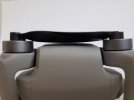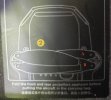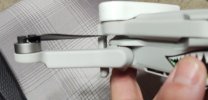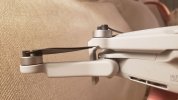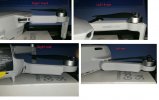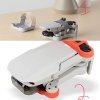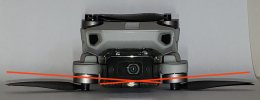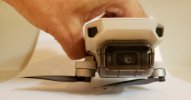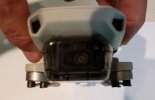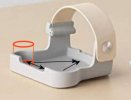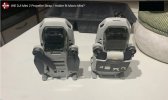Do you have photos of bad blades in comparison to good blades that prove they indistinguishable?
I don't believe Niterunnr is just trying to get free stuff, and I think his complaint has merit. Some of the responses in this thread are overly harsh.
There is ample evidence posted throughout this forum demonstrating that the way the Mavic Mini is shipped and stored, even "properly" stored according to DJI's instructions, can and does lead to propeller blade deformation. There is nothing particularly wrong with the design of the Mini itself or its prop blades. It's specifically a matter of how the relatively flimsy and soft blades are forced to bend when crossed over each other to fit into the shipping box or into the Fly More storage case.
You can clearly see that the Mini's motors are mounted at different angles. They are not flat on equal horizontal planes.
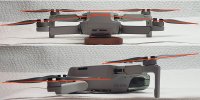
When the arms are folded for storage, new straight rear blades cross in an X-shape and cannot be meshed together laterally across the body of the Mini without forcing the blades to bend.
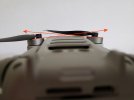
Sure the blades are flexible, and they can easily be convinced to mesh together. But, as you can see in this next image, the tips of the blades on one side must bend down to fit under the opposite side's blades. As the blade tip is bent down the trailing edge of the blade contacts the body of the Mini. So the tip is bent down, while the trailing edge is forced up, causing a torsion in the blade which flattens the blade's pitch profile. If stored in this position for sufficient time, the blades lose performance. The motors need to spin faster to generate the same amount of required lift. Eventually this triggers the Motor Speed Error warning, or the Propeller Speed warning, with instructions to replace the propeller blades.

From some of the comments in this thread, it is evident that many people are still not even aware of this problem. Of course improper storage with the weight of the Mini resting on the propeller blades will make the situation worse. But the issue here is that the blades are being bent even by "proper" storage, and as in how the Minis are shipped by DJI with the blades held in the crossed position.
Stiffer props will not cure the issue. You can see in the photos above that, if the blades were made stiffer, it would be impossible to fold them together in this storage position without twisting the motor arms.
Other comments make it seem like it's entirely the fault of the pilot for not doing a proper pre-flight inspection to notice that their blades are bent. But the deformation can be quite subtle and difficult to see using only a visual inspection. Here's an example. In this thread about Prop Guards, this guy kept insisting that his props fold easily together without bending and and he can see nothing at all wrong with them. He posted this photo to show that his blades are straight and fine.
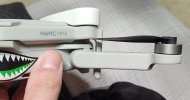
But, compare the height of his blade tips to mine. Mine are new blades have never been stored folded in the crossed position.
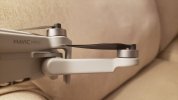
The prop bending issue is a direct result of folding the arms and crossing the blades. DJI have never acknowledged this, but they have changed the way in which the new Mini-2 is shipped. The Mini-2 now includes a prop holder which positions the rear blades swept forward at a 45° angle so that their tips do not cross.
I don't need DJI to compensate me with a new set of blades or a new prop holder. I don't need money either. But I worry that without an acknowledgement or proper guidance from DJI, people will continue to be unaware of this issue.
DJI changed the firmware to include a Motor Speed Error or Propeller Speed warning, with a beeping ESC to identify the motor needing to have prop blades replaced. But people keep getting the same errors again soon after replacing their blades. People even receive these errors on brand new Minis straight out of the box. The warnings are so common, with no apparent damage to the props, that people routinely ignore the warnings, or even downgrade firmware to remove the annoying warnings. People have lost their Minis due to Uncommanded Descents when the motors are no longer capable of spinning faster to produce the required lift.
The original poster has a valid point. DJI is obviously aware of the issue and, other than recommending frequent replacement of the propeller blades, they have not accepted liability for the root cause nor recommended a solution.




